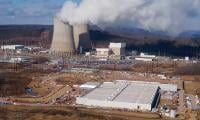This year’s Earth Day, with the theme ‘Our Power, Our Planet’, demanded more than symbolism for Pakistan. Amidst the escalating climate risks, fiscal stress and deepening energy poverty, the country faces a decisive moment.
The energy transition is no longer a theoretical choice, it is an economic, environmental, and strategic imperative. Globally, efforts are underway to triple renewable energy by 2030. For Pakistan, success requires not just decarbonisation but also addressing structural imbalances, energy poverty, regional disparities, and industrial competitiveness to pave the way for a more inclusive, sustainable and climate-resilient energy future.
Meanwhile, long hours of load shedding remain routine, while circular debt has crossed Rs2.6 trillion. Transmission and distribution losses in FY23-24 were 18.31 per cent (above Nepra’s 11.77 per cent threshold), adding over Rs280 billion to the debt. Electricity sales fell by 10 per cent in FY23, with plant utilisation at just 33.88 per cent despite 45,888MW of installed capacity. These trends reflect inefficiencies, poor planning, and underinvestment.
Pakistan’s renewable energy ambitions are hindered by outdated grid infrastructure, limited transmission capacity, and regulatory fragmentation. To accelerate the transition, targeted grid upgrades, federal-provincial alignment and frameworks for energy storage, investment and indigenous technology and workforce development are vital. Without these steps, the transition risks stalling before it can reach scale.
On the other hand, renewables, including large hydro, account for 31 per cent of the energy mix, but wind and solar contribute less than 10 per cent, well below targets. The IGCEP 2024–2034 aims for 57,000MW by 2034, with renewables making up 57 per cent of the mix. But without institutional coherence, timely reform, and investor confidence, these targets remain aspirational.
At the same time, a decentralised energy shift is underway. In 2024, solar panel imports exceeded 17GW, and net-metered capacity doubled. Faced with unreliable supply and rising tariffs, both industrial and residential consumers are opting for self-generation. What began as a coping mechanism is evolving into a quiet transition. However, proposed rollbacks in net metering may impede solar adoption, pushing consumers toward off-grid microgrids.
While solar helps reduce costs and fossil fuel reliance, it raises concerns about grid stability and the financial health of distribution companies (DISCOs). A well-researched, data-driven approach, with robust stakeholder input, is crucial to ensure policy stability and address sectoral challenges effectively.
Pakistan’s electricity consumption profile aligns with the potential for decentralised solar. In FY2023–24, households accounted for nearly 50 per cent of demand, while industry used just 18 per cent, a structural imbalance that increases costs and limits productivity. Rooftop solar could help meet residential demand and free grid capacity for industry, boosting exports, jobs, and economic resilience.
Moreover, the rise of electric vehicles, electric cooking, and decentralised generation is reshaping demand and introducing new pressure points. This shift requires a responsive, bidirectional grid capable of managing distributed flows and integrating storage. Tools like AI-driven bidirectional energy systems, demand-side management, time-of-use pricing and energy storage are now essential for a stable energy system.
Pakistan’s power grid infrastructure, largely designed decades ago, is increasingly exposed to climate-related stresses, from heatwaves and humidity to dust storms and dense fog. These shifting conditions are no longer anomalies but recurring threats, straining equipment and triggering service breakdowns. Transmission lines trip under summer monsoons; transformers falter in rising heat. Yet grid resilience remains largely under-addressed. Investing in real-time condition monitoring, adaptive technologies like RTV coatings and timely grid maintenance is essential to prevent cascading outages. Without integrating resilience into planning, design, and regulation, the power system will remain vulnerable to disruptions, compromising both stability and equity.
Energy storage is a critical missing link in ensuring grid reliability and in ensuring grid reliability and effective renewable integration. While the TSEP 2024–2034 plans for 200MWh of storage in wind-rich regions like Jhimpir and Balochistan, this capacity may not fully meet the growing demands of renewable integration. Without scalable storage solutions, the effective incorporation of renewables will face significant constraints. In an era of climate-linked trade and increasing energy volatility, ensuring system reliability calls for more than just incremental upgrades; it calls for a holistic, long-term strategy for energy storage that guarantees sustainability and resilience.
Thus, a renewable roadmap must expand capacity, improve grid infrastructure, mobilise private capital and foster local innovation, particularly in underserved regions. While replacing imported coal with local sources may ease foreign exchange pressures, it raises environmental concerns. Thus, a balanced strategy to phase out coal in favour of cleaner alternatives is also required.
In this context, the Asian Development Bank’s Pakistan Low-Carbon Energy Outlook and Technology Roadmap 2024 outlines a viable path to reduce emissions by 36 per cent by 2050 through improved energy efficiency, fuel switching to low-carbon fuels, and electrification. Notably, the majority of these reductions are expected from user-side actions, such as industrial decarbonisation, electric vehicles and clean cooking. Achieving this will require $192 billion in additional investment by 2050, covering hydro, solar, wind, nuclear power and $22 billion for transmission and distribution. This capital must come primarily from private sources, not public budgets.
Similarly, the restructuring of IPP contracts, linking payments to the rupee and moving toward take-and-pay models, has created some fiscal space. However, these are transitional steps. Their value will only materialise if savings are reinvested in grid modernisation, storage expansion and system flexibility to support integration of renewables to accelerate the transition.
Financing is a key challenge for Pakistan’s clean energy transition, requiring over $72 billion by 2034. With limited public resources and rising debt, securing private capital through green bonds, concessional loans, and Just Transition mechanisms is essential. Leveraging risk-sharing instruments, Coal-to-Clean Credit initiatives, and carbon markets will be crucial in aligning investments with sustainability goals and mobilising resources effectively from both the public and private sectors.
Beyond technical reforms, Pakistan’s energy transition must drive economic recovery through local innovation and workforce development. A diversified energy mix strengthens industrial competitiveness and reduces trade imbalances, while local manufacturing of clean technologies creates jobs and cuts import dependency. Crucially, developing human capital and nurturing indigenous technology will cultivate a skilled workforce, lessen dependence on imported technologies and foreign expertise and attract investment. A climate-resilient energy system will foster sustainable growth, advancing energy security and economic resilience.
Energy justice lies at the heart of Pakistan’s power crisis. With 23 per cent lacking reliable electricity, including 8.0 per cent with no grid access and nearly half still reliant on harmful fuels for cooking, energy poverty runs deep. Equitable access remains an unfulfilled promise. Therefore, achieving energy equity calls for a shift to cleaner, more inclusive solutions like community-driven renewables mini/microgrids to electrify and empower the underserved communities. Community mini/microgrids based on public-private partnerships can offer a viable solution, but scaling them requires long-term planning, robust regulatory support, inclusive ownership models, and sustained concessional finance, not donor-driven pilots.
Structural reform is overdue. The single-buyer model has bred inefficiency. Transitioning to a Competitive Trading Bilateral Contract Market (CTBCM) could open the sector to direct contracts between producers and bulk consumers, but issues around wheeling charges and open access delay its implementation.
In addition, energy efficiency, recognised as the first fuel in the clean energy transition, remains neglected. With households using nearly half of all power, enforcing building codes, promoting efficient appliances, and managing peak load could reduce system stress, but policy attention remains limited.
Finally, Pakistan’s power sector is 1.4 times more carbon-intensive than the EU average, exposing exporters to carbon border taxes. Without a credible decarbonisation strategy, the country risks losing ground in climate-linked trade and investment.
This transition goes beyond mere energy sector reforms. At stake is not just clean power, but macroeconomic stability, green jobs, social equity and Pakistan’s place in an evolving global economy. While coal may remain part of Pakistan’s energy mix in the short term, a balanced approach is needed to phase it out in favour of cleaner alternatives. This approach must align immediate economic needs with a long-term, strategic shift toward renewable energy, ensuring a smooth transition that supports both growth and sustainability.
Achieving this transition will require thoughtful policy reforms and active mobilisation of both the private sector and international investment. Through coordinated efforts and strategic investments, Pakistan can harness its renewable energy resources, creating a cleaner, more resilient energy future that aligns with both national and global climate goals for sustainable development.
The writer is an academic and researcher based in Jamshoro. He can be reached at: hussainshafqat.memon@gmail.com















